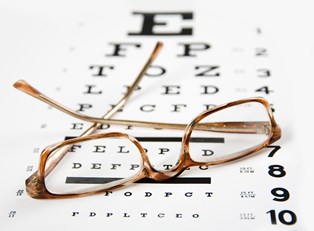Age-related macular degeneration is an eye disease that is the main cause of vision loss for people over age 55; it affects almost 2 million Americans. The number of affected people is expected to grow to 3 million by 2020, due to the nation’s aging population.
Overview of Macular Degeneration
The condition affects the macula, which is a part of the retina. The retina's role is to capture light signals from the optic nerve and send them to your brain to be interpreted. Those signals are interpreted as sight. The macula is responsible for providing clear central vision. This is what is used for close, precise tasks such as reading and writing.
There are two forms of macular degeneration: wet and dry. The dry form is the most common, and the loss of vision is usually gradual as the macula's light-sensitive cells break down over time. The less common wet form involves the growth of abnormal blood cells under the retina that may swell and leak. The swelling of these blood cells can result in the retina being damaged. Vision loss with the wet form may occur far more quickly. It is possible to have both wet and dry forms occurring in the same eye.
Symptoms of Macular Degeneration
Age-related macular degeneration does not cause pain, and the symptoms may take years to become severe. Here are some indicators of the disease that should be noted when they occur:
- Straight lines can start to look distorted so that the shape of objects will appear different in each eye.
- The size of objects may appear to be different in each eye. This is because swelling of the macula may affect photoreceptors, leading to an incorrect interpretation by the brain.
- Your color perception may be altered or may decrease.
- The center of your central vision may become dark or blurry. That blurred area may become larger over time. This may not be noticed in the early stages of the disease, as it may not develop in both eyes at the same rate; the good eye will compensate for the bad eye and make the symptoms easier to ignore.
- The presence of drusen, which are small yellowish spots at the back of the eye. These spots will typically start out medium-sized and then grow as the disease progresses. It is possible to have these spots without any loss of vision.
Risk factors for Macular Degeneration
Age is one of the more significant risk factors for this condition. The disease is more likely to affect those over 60, though it may show up earlier. Research has also shown that a person who smokes has double the risk of developing age-related macular degeneration.
Macular degeneration runs in families, so people with a family history of the disease are at a greater risk than the rest of the population.
No treatment exists for people in the early stages of this disease, but studies have shown that the daily intake of certain vitamins and minerals in high doses helps to slow its progress in later stages. Vitamin C, E along with beta-carotene and zinc have been shown to play a role in reducing the rate of progress in intermediate macular degeneration.



